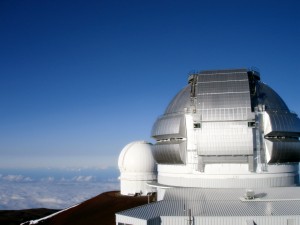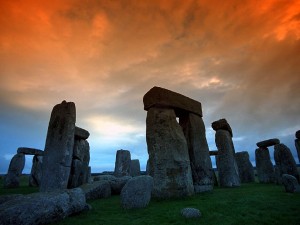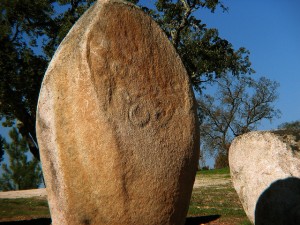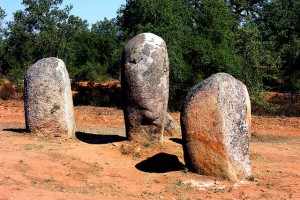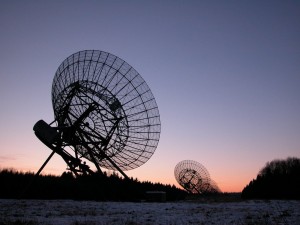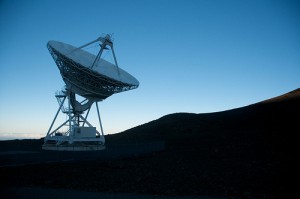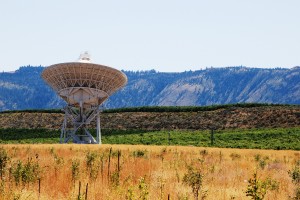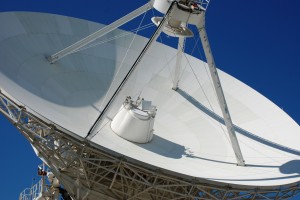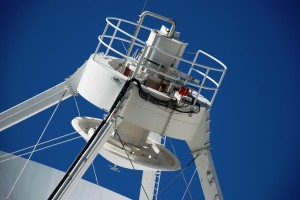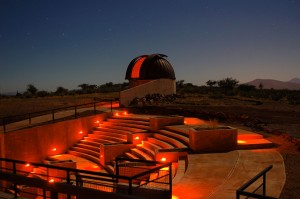Here’s a daytime photo, to complement one of my all-time favorite night-time images of Gemini North, Mauna Kea, Hawai’i. Click on the image to download the wallpaper in various sizes, including those meant for mobile devices as well as desktop computers.
Wallpaper Wednesday
24 08 2011Comments : Comments Off on Wallpaper Wednesday
Categories : Gemini, Observatories, Wallpaper
Brass Instruments
12 08 2011If you’re interested in brass instruments, check out the instrument collection compiled by the Friends of the University of Illinois Observatory. The Newton & Co. sextant (pre-1896) is particularly sweet.
Comments : Comments Off on Brass Instruments
Categories : Observatories
Wallpaper Wednesday
10 08 2011In keeping with this week’s theme of archaeoastronomy, I’m sharing this lovely photo of Stonehenge. More Stonehenge wallpapers can be downloaded here.
Comments : 2 Comments »
Categories : Observatories, Wallpaper
Alentejo Megaliths
9 08 2011I’m moving offices, so I’ve been sorting through the stacks of paper that have failed to find a home in a file folder over the past two years. On top of my stack of archaeoastronomy articles was an analysis of the megalithic enclosures in the historical province of Alentejo in south-central Portugal.* I saved it because I thought it might be relevant to my dissertation (it wasn’t); I re-read it because I had been thinking about the distribution of megaliths across northern Europe while writing about Stonehenge knock-offs yesterday.
The Alentejo stretches south from the Tejo River to north of the Algarve (Faro District). The Évora district occupies the middle section of the Alentejo. Within the Évora district are twelve known stone enclosures built during the Middle Neolithic period (sixth to fifth millennia B.C.). Most of the enclosures were built in a horseshoe shape, with openings oriented to the east. The smallest complex, Vale d’el Rei, has twelve menhirs in a simple horseshoe shape; the largest, Almendres, has 94, with a more complicated configuration.
A new archaeological survey was conducted of the twelve known sites, including both the location of the extant menhirs and their relationship to the larger landscape (distance to horizon profile, horizon marks, maximum slope, axis of symmetry).** The survey demonstrated that eight of the twelve sites had axes with orientations within a range of 35.4° of azimuth, in approximately the eastern direction. The research team concluded that the probability of this common orientation occurring by chance was very low (~7 x 10^-7), and there could only be two explanations for it:
“either an astronomical target (Sun, Moon, or planets, based on the possible declinations for 6000-5000 B .C.) or a construction following the slope, turned to the direction of the far horizon, since we verified a Pearson product-moment correlation coefficient of .7 between the azimuth of the symmetry axis and the azimuth of the steepest slope.” (p.7)
I’m not sure of what I think of this first conclusion. What about the 1/3 of the sites that didn’t exhibit this commonality? And what about Xarez, which was excluded from the study because of controversial excavations (see **, below), but may have had a different configuration that then twelve sites included the study? At any rate, this initial conclusion motivated the research team to further analyze their data to determine which of the two options was most probable.
The data crunching is impressive and I direct you to the published article to read the description of their probability models (I am not qualified to comment on the validity of Bayesian analysis in this case). Ultimately, the team discarded the possibility that the structures had been positioned in regard to slope. That left them with option two—the stones were arranged in response to an astronomical target. But which target?
It’s possible that the stones had a lunar association—the crescent symbol is engraved on several menhirs in Almendres, Pórtela de Mogos, and Vale Maria do Meio. Most of the engraved surfaces face the east, which could indicate a lunar orientation. On the other hand, it could also indicate a solar orientation, much like that exhibited by the dolmens (stone tombs) in the same region. The builders of the monuments were likely hunters-gatherers-farmers and may have needed the stones as a tool for telling time or marking the seasons. Or maybe not. The authors seemed to hedge their bets, which is common when writing about ancient architectures, but didn’t leave me feeling convinced of their conclusions.
That being said, the tables that accompanied the article are quite valuable. They include menhir statistics (size, location, position, decorations), enclosure statistics (latitude, azimuth of steepest slope, slope, symmetry axis aximuth, declination, horizon altitude), elevation profiles and horizon features of the sites in the study, and site plans for the Almendres, Vale Maria do Meio, Portela de Mogos, Tojal, Cuncos, Sideral, Fontainhas, and Val d’el Rei enclosures. You can also see site plans for many of the enclosures, drawn by Pedro Alvin, at http://www.crookscape.org/sitios.html (scroll to the bottom of the page).
Notes:
*Fernando Pimenta, Luís Tirapicos, and Andrew Smith. “A Bayesian Approach to the Orientations of Central Alentejo Megalithic Enclosures.” Archaeoastronomy 22 (2009): 1-20.
**The archaeological survey did not include the stone circle of Xarez, citing controversial excavation and reconstruction techniques as described in: Manuel Calado, Menires do Alentejo central. Genese e evoluçâo da paisagem Megalitica regional, Lisboa. 2004. Unpublished Ph.D. dissertation. University of Lisbon.
Comments : Comments Off on Alentejo Megaliths
Tags: Portugal
Categories : Archaeoastronomy, Observatories
Stonehenge Revisited
8 08 2011True story: when I first visited the Stonehenge Memorial at the Maryhill Museum of Art in Washington State, I didn’t know it was an imitation. I usually attribute my ignorance to my age at the time and my upbringing in a rural area in the dark ages before the Internet, but even with those allowances, you’d think I would’ve learned at some point in grade school that Stonehenge was at Avebury on Salisbury Plain.* Luckily, I was smart enough to keep my mouth shut on the way to Maryhill, where the signage explained that the monument was a replica.
There are so many Stonehenge replicas in the world, some more accurate than other. Of the less accurate but more entertaining variety, Carhenge is probably the most famous. I’ve managed to drive through the State (uh, Official Commonwealth) of Virginia several times without ever stopping at Foamhenge. And, no, I wasn’t at Glastonbury in 2007 to see the construction of Banksy’s Loohenge.
More interesting to me are the models that attempt to establish some relationship between the architecture and astronomy. Although the sentiment behind the Maryhill Stonehenge was misplaced, as a structure, it is carefully designed and well-built, with the altar stone aligned with the sunrise at the summer solstice. Similarly, although Stonehenge Aotearoa was built at a similar scale to the structure at Salisbury, it was aligned for the southern skies. For example, the heel stones of the henge mark the rise and set points of the sun at the midsummer and midwinter solstices, and the autumn and spring equinoxes. In addition, a well-placed obelisk points to the celestial south pole, acting as an axis mundi for the night-time visitor. Specific to the Aotearoa site are stone representing the Pleiades, or the “Seven Sisters”. Maori refer to this group of stars as “Matariki” and use its position mark the beginning of a new year in late May/early June. To the south-west of this group of stones stands a single marker stone indicating the location of Matariki’s rise.
So, I find the models that attempt to investigate/explain the links between astronomy and architecture more interesting than things like “Butterhenge” or “Peepshenge”. Most interesting of all, however, are the many “real” henges that I only learned about in heritage management courses in graduate school: Woodhenge, Seahenge, the Ring o’ Brodgar, Stenness (Orkney); the Thornborough Henges, Yorkshire; the Mayburgh Henge, Cumbria; and many others. They intrigue me for the obvious reasons—what do they mean, who built them, how were they built—but as a historian with a research interest in cultural heritage studies, I also find them interesting test cases for public and state preservation policy. How do you approach the management of a wood henge that has been almost completely eroded by the sea? Who has the right to access the inner circle of Stonehenge? Can you copyright a neolithic stone structure?
*By the way, don’t listen to all those people who complain about Stonehenge being a tourist trap and a disappointment just because you can’t touch the stones or buy a decent cup of coffee at the site. Stonehenge is awesome, case closed.
Comments : Comments Off on Stonehenge Revisited
Tags: Stonehenge
Categories : Archaeoastronomy, Observatories
Wallpaper Wednesday
3 08 2011Today’s lovely wallpaper (click on image to download) shows the Westerbork Synthesis Radio Telescope (WSRT), at the Netherlands Institute for Radio Astronomy (ASTRON), not the Onsala Space Observatory, as the linked page would have you believe. The Westerbork telescope works on the same interferometry principles that determine the design and use of other mobile arrays, such as the Very Large Array (VLA) at the National Radio Astronomy Observatory, the One-Mile Telescope at the Mullard Radio Astronomy Observatory (MRAO), and the Australia Telescope Compact Array at the Paul Wild Observatory. Although you can’t really tell from this photo, one thing that sets this array apart from most is that the telescopes have equatorial, rather than alt-azimuth, mounts.
Comments : Comments Off on Wallpaper Wednesday
Categories : Observatories, Telescopes, Wallpaper
VLBA NRAO
29 07 2011My flickr set for the Brewster terminus of the Very Large Baseline Array (VLBA) continues to grow. Follow the link for more photos of the radio telescope and its close neighbor, the U. S. Electrodynamics communications satellite station.
Comments : Comments Off on VLBA NRAO
Categories : Instruments, Observatories
Wallpaper Wednesday
28 07 2011In honor of my recent visit to one end of the VLBA, I’m linking you to a beautiful photo of the VLBA telescope on Mauna Kea. Click on the image to access it in various sizes and to thank Troy Mason for making the image available through Creative Commons licensing.
Comments : Comments Off on Wallpaper Wednesday
Categories : Instruments, Observatories
VLBA NRAO
24 07 2011We started our summer vacation with a trip to the Very Large Baseline Array (VLBA), or I should say, one of the ten radio telescopes that comprise the VLBA. The powers that be at the National Radio Astronomy Observatory (NRAO) saw fit to place one of the dishes near Brewster, Washington, an act which positioned it directly on the path between the Spokane airport and my parents’ house.
At the moment, the VLBA is the world’s largest dedicated telescope array with the sharpest resolution. The telescope spans 5,351 miles (8,611 km), with dishes located near Brewster; Owens Valley, CA; Pie Town, NM; Fort Davis, TX; Los Alamos, NM; North Liberty, IA; Hancock, NH; Mauna Kea, HI; Kitt Peak, AZ; and St. Croix, Virgin Islands. The ten telescopes—each with a reflecting dish, feed/antenna & receiver—are connected via transmission line and combine to form a massive interferometer with a spectacularly high resolution. All the dishes gather a radio signal from the same object at the same time. When the received signal from one telescope is superposed with the next, and so on, the ten single telescopes function as if they were one massive instrument with a baseline as large as the greatest distance between dishes.
Some telescope arrays, like the Very Large Array (VLA), can change the baseline length, and therefore the resolution of an image, by relocating individual telescopes along tracks. The ten telescopes of the VLBA are at fixed points; they rotate, but don’t move horizontally. However, they can be asked to work together with other radio telescopes (Arecibo, Effelsberg, NRAO’s Green Bank Telescope or the VLA) to perform as the High Sensitivity Array.
If you’d like to watch the Brewster telescope “in action,” NRAO provides a real-time feed of the instrument (refreshes every five minutes). They’ve also provided a fairly lucid explanation of radio astronomy and some kind of cool movies of black holes as observed by the VLBA. And, if you’re like me, and prefer to follow inanimate objects on twitter, you can follow the lives of the telescopes @TheNRAO. There are thirty-two more photos of the instrument on my flickr site, including several that can be strung together in a slide show to depict the slewing of the telescope .
Comments : Comments Off on VLBA NRAO
Categories : Observatories
Wallpaper Wednesday
20 07 2011Today’s wall paper shows the Cruz del Sur Observatory in Cerro El Peralito, near Combarbalá, Chile. This observatory, which consists of four domes arranged to mimic the Southern Cross constellation, exists to spread the passion for astronomy in the local community. The domes pinning down the ends of the large arm of the cross house 16″ Meade LX200-R-type Schmidt-Cassegrain telescopes. The domes anchoring the short arm of the cross house 14″ Meade LX200-R-type Schmidt-Cassegrain telescopes. Although visitors are required to book ahead and pay a nominal ticket fee, the observatory welcomes guests for tours during the day and night.
Click on the image and look to the right hand column to download the image as wallpaper.
Comments : Comments Off on Wallpaper Wednesday
Categories : Observatories, Wallpaper
